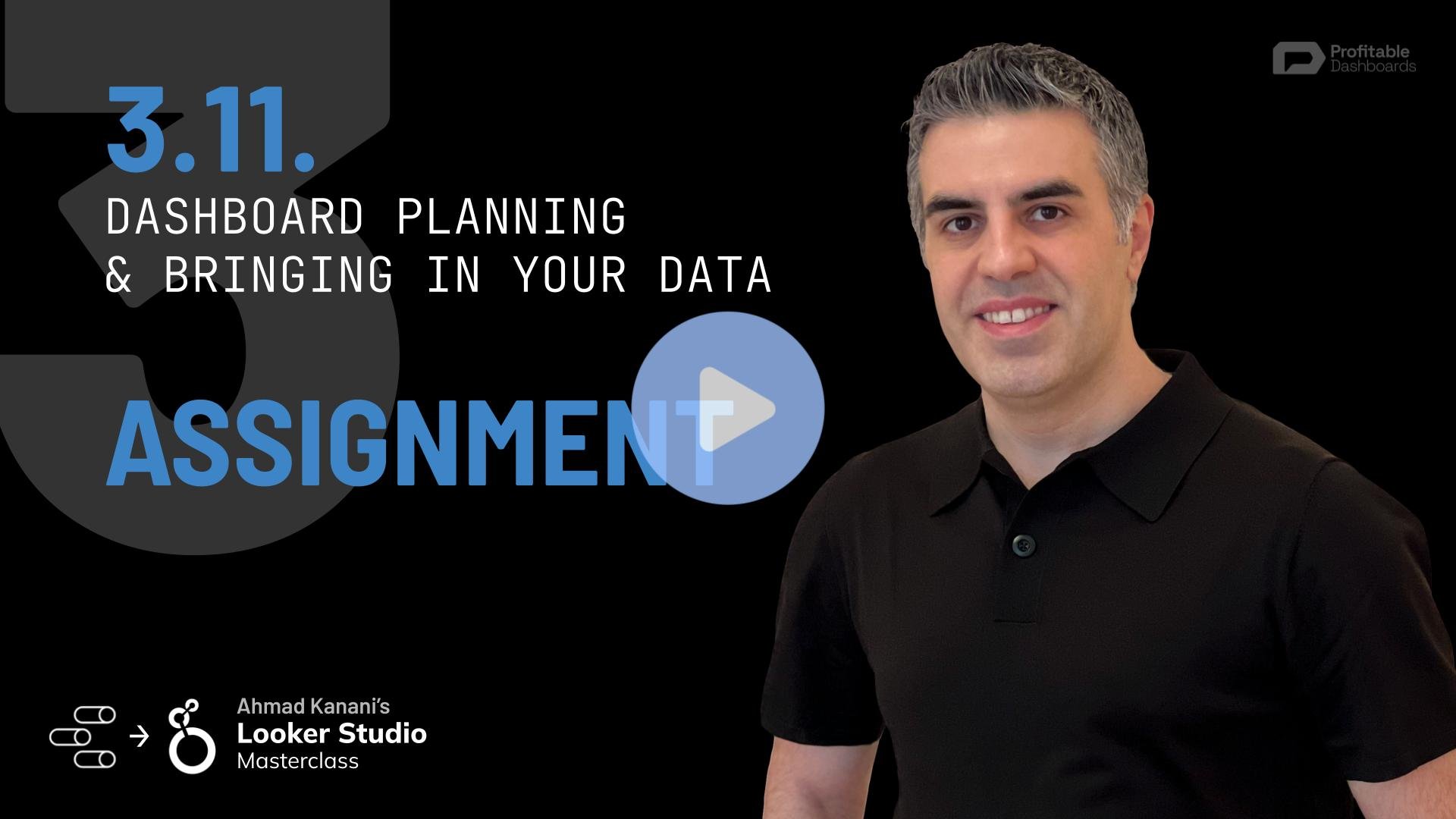12.10. Parameter Example: Dynamic Dimension
Learn to implement dynamic dimensions and custom fields in your tables. Use the CASE function and dropdown menus to streamline your data analysis process
12.9. Parameter Example: UTM Generator
Master the art of UTM link generation with our practical guide. Understand text parameters, create custom links, and enhance your marketing strategies today
12.8. Parameter Example: Google Maps Link
Learn to create a text-based parameter for addresses, allowing users to generate Google Maps links. Follow our guide for easy setup and practical examples
12.7. Scope of Parameters
Master the hierarchy of default values in Looker Studio. This lesson guides you through overriding parameters at various levels to enhance your reporting capabilities
12.6. Parameters on Charts
Discover how to add reference lines to your charts for better goal visualization. Adjust parameters and calculations to track performance effectively and meet targets
12.5. Parameters - Range of Values
Discover the benefits of using sliders for inputting average profit margins. Enhance user experience with clear visual cues and reduce input errors effectively
12.4. Parameters: From Creation to Visualization
Master the art of creating parameters in Looker Studio. Our comprehensive guide walks you through user input, calculations, and visualizations for impactful data insights
12.3. Properties of Parameters
Unlock the power of parameters in Looker Studio. Master their properties and learn to create dynamic reports that respond to user input for enhanced interactivity
12.2. Use Cases for Parameters
Enhance your data analysis with user-provided goals and dynamic metrics. Effortlessly adjust inputs, perform custom calculations, and explore various projections
12.1. Introduction to Parameters
Discover the power of parameters in Looker Studio, enabling viewers to customize data calculations and create personalized reports tailored to their needs.
3.11. Dashboard Planning Assignment
Discover how to effectively plan your dashboard using our comprehensive template. Address key questions to visualize data and enhance reporting for users.
3.10. Managing Your Data Sources
Learn how to efficiently manage your data sources in Looker Studio. Explore sharing, duplicating, and reconnecting techniques to enhance your data modeling experience
3.9. Data Freshness & Caching in Looker Studio
Master caching in Looker Studio by adjusting data freshness thresholds. Ensure your reports load quickly with the right balance of fresh and cached data
3.8. Embedded vs Reusable Data Sources in Looker Studio
Explore the backbone of Looker Studio: data sources. Understand their properties, data modeling, and how to control access with owner and viewer credentials
3.7. Data Sources in Looker Studio
Uncover the importance of data sources in Looker Studio. Master data modeling, custom fields, and secure data access through effective credential management
3.6. Looker Studio Partner Connectors
Learn about key partner connectors for Looker Studio that integrate non-Google datasets. Maximize your analytics potential with Supermetrics, PMA, Funnel.io, and Dataddo
3.5. Google Connectors in Looker Studio
Uncover the power of Google’s built-in connectors for Looker Studio. Access diverse data sources like Google Ads and YouTube to create insightful reports effortlessly
3.4. Live vs Warehoused Data Connectors in Looker Studio
Explore the pros and cons of live connectors like Google connectors and Supermetrics. Learn about data freshness, pricing, speed, reliability, and transformation capabilities
3.3. Looker Studio Data Connectors
Explore how data connectors serve as vital pipelines in Looker Studio, enabling seamless data extraction and transformation from diverse APIs for enhanced reporting
3.2. Bringing in Your Data into Looker Studio
Learn the essentials of data connectors and sources for Looker Studio. This chapter guides you in bringing data to life through impactful charts and reports




















